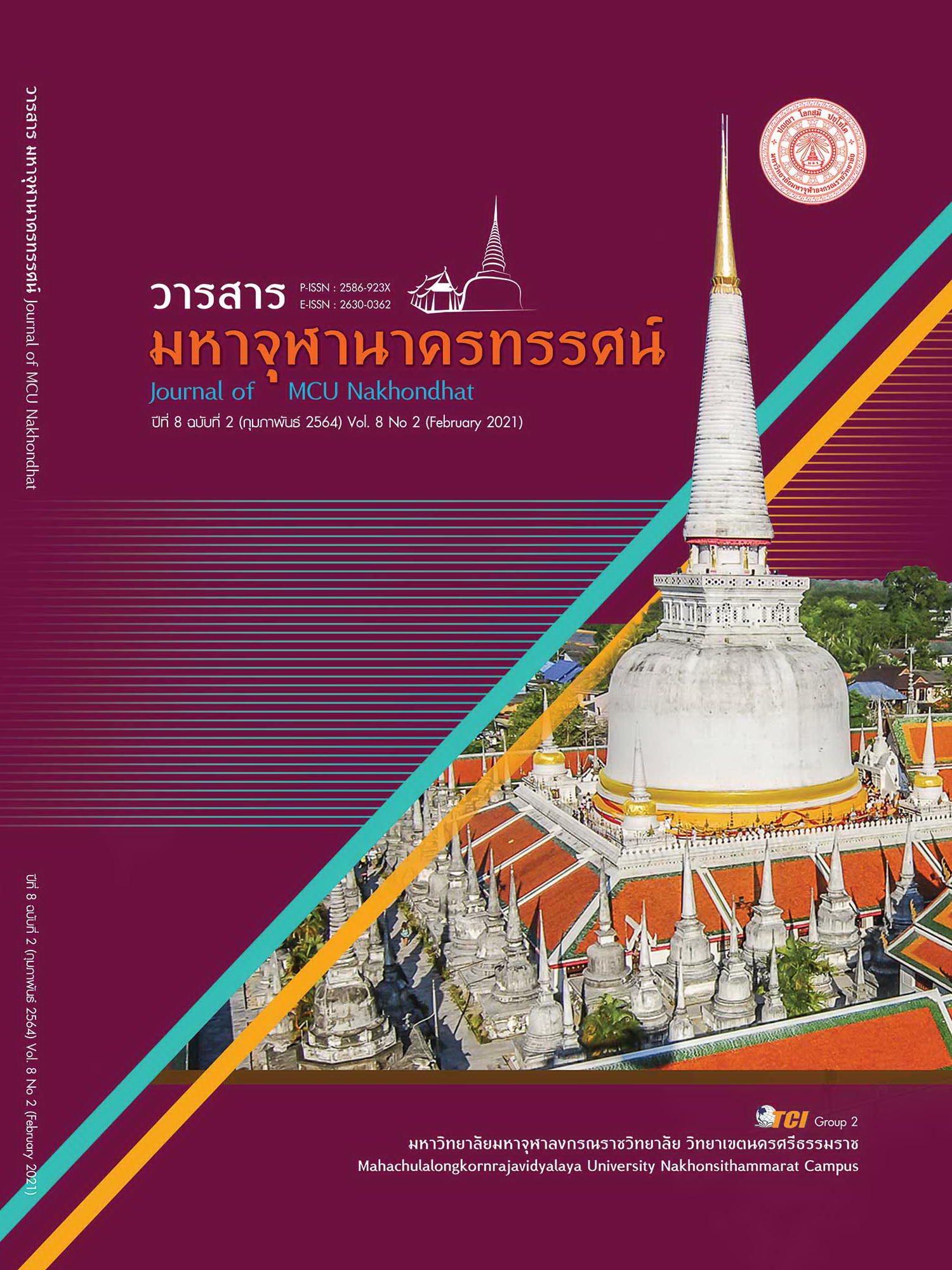COMMUNITY MANAGEMENT ACCORDING TO SANGKHAHAWATTHU 4 PRINCIPLES
Main Article Content
Abstract
Human society is a society that is grouped together. These groups are communities of different sizes, from villages, sub - districts, towns and countries, so there must be a social organization To be able to carry out activities in order to survive, peace and make progress in those communities Is the cause Community is a relatively informal social unit that is almost the smallest of the social system, such as a village, a sub - district, or a sub - district administrative organization. When the community is already a small institution Therefore, the duties of the community come out in a primary manner These functions are similar to the functions of the family institution and may be somewhat different. For example, family institutions are responsible for nurturing members and communities. If a society is deprived of a community, it is like a society that lacks a mechanism for performing basic social functions, such as the socialization process of the community.
Buddhism has always been one of the most important institutions in providing assistance to Thai society. And characteristics of Thai people, as well as providing services according to the needs of the people It has also contributed to most of our social problems, even today that importance remains. Therefore, in order to give people a good understanding of how to live together By introducing the principles of Buddhism, namely Sangkhahawatthu, 4, Than Piyawaja, Atthaya, and Samanatta as the basis for application of community management. To make the community management to be driven effectively into a livable community.
Article Details
References
เกรียงศักดิ์ เจริญวงศ์ศักดิ์. (2544). ผ่าวิกฤติชุมชนล่มสลาย. กรุงเทพมหานคร: ซัคเซสมีเดีย.
โกวิทย์ พวงงาม. (2553). การจัดการตนเองของชุมชน. กรุงเทพมหานคร: เอ็กซเปอร์เน็ต.
ชยาภรณ์ ชื่นรุ่งโรจน์. (2564). ชุมชน. เรียกใช้เมื่อ 24 มกราคม 2564 จาก http://www. human.cmu.ac.th/-hc/ebook/006103/Lesson10/01.htm
เด่น ชะเนติยัง. (2539). การบริหารงานบุคคล. กรุงเทพมหานคร: สำนักพิมพ์จุฬาลงกรณ์มหาวิทยาลัย.
ประเวศ วะสี. (2541). ยุทธศาสตร์ชาติเพื่อความเข้มแข็งทางเศรษฐกิจ สังคมและศีลธรรม. กรุงเทพมหานคร: สำนักพิมพ์มูลนิธิโกคีมทอง.
ปาริชาติ วลัยเสถียร และคณะ. (2546). กระบวนการและเทคนิคการทำงานของนักพัฒนา. กรุงเทพมหานคร: โครงการเสริมสร้างความรู้เพื่อชุมชนเป็นสุข (สรส.).
พระครูวิจิตรธรรมานุรักษ์. (2557). การประยุกต์ใช้หลักพุทธธรรมสาหรับการพัฒนาชุมชนของพระสังฆาธิการ ในเขตปกครองคณะสงฆ์ภาค 2. ใน ดุษฎีนิพนธ์พุทธศาสตรดุษฎีบัณฑิต สาขาวิชาการจัดการเชิงพุทธ. มหาวิทยาลัยมหาจุฬาลงกรณราชวิทยาลัย.
พระธรรมปิฎก (ป.อ. ปยุตฺโต). (2543). พจนานุกรมพุทธศาสตร์ฉบับประมวลธรรม. (พิมพ์ครั้งที่ 9). กรุงเทพมหานคร: โรงพิมพ์มหาจุฬาลงกรณราชวิทยาลัย.
พิสมัย จันทวิมล. (2541). นิยามศัพท์ฉบับปรับปรุง พ.ศ. 2541. กรุงเทพมหานคร: สถาบันวิจัยระบบสาธารณสุข.
สนธยา พลศรี. (2547). ทฤษฎีและหลักการพัฒนาชุมชน. (พิมพ์ครั้งที่ 5). กรุงเทพมหานคร: โอเดียนสโตร์.
สมพงศ์ เกษมสิน. (2545). การบริหาร. (พิมพ์ครั้งที่ 7). กรุงเทพมหานคร: ไทยวัฒนาพานิช.
เสนาะ ติเยาว์. (2545). หลักการบริหาร. (พิมพ์ครั้งที่ 3). กรุงเทพมหานคร: โรงพิมพ์มหาวิทยาลัยธรรมศาสตร์.
ไสว มาลาทอง. (2552). คู่มือการดำเนินงานเสริมสร้างศีลธรรมสำหรับเด็กและเยาวชน. กรุงเทพมหานคร: โรงพิมพ์ชุมนุมสหกรณ์การเกษตรแห่งประเทศไทย จำกัด.
อาคม ใจแก้ว. (2543). แนวความคิดเบื้องต้นทางสังคม เศรษฐกิจและการเปลี่ยนแปลง. สงขลา: มหาวิทยาลัยสงขลานครินทร์.


